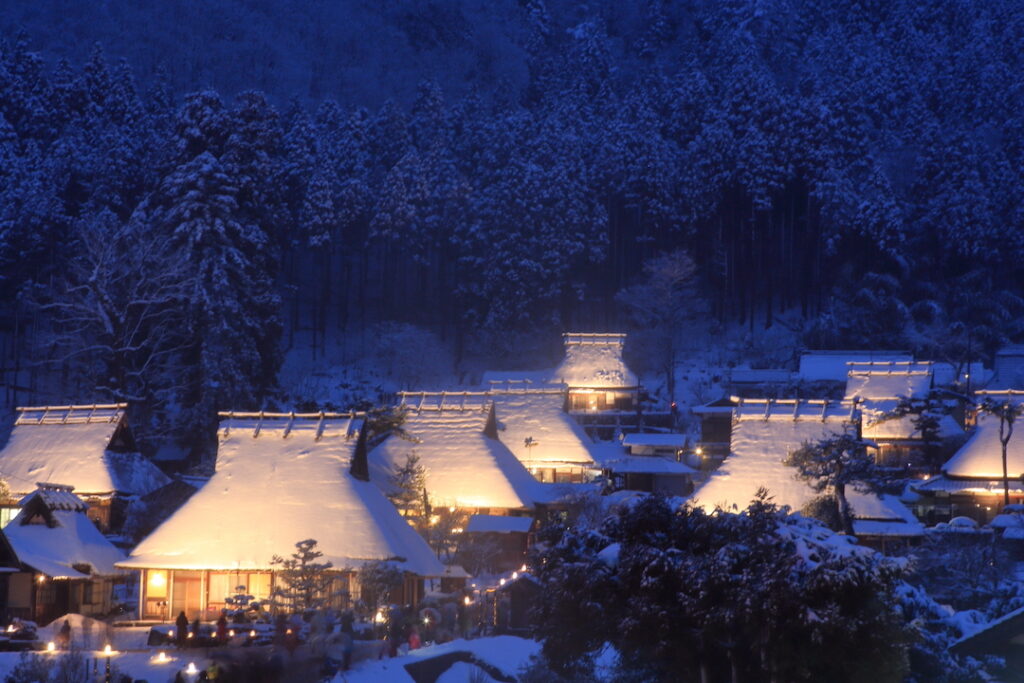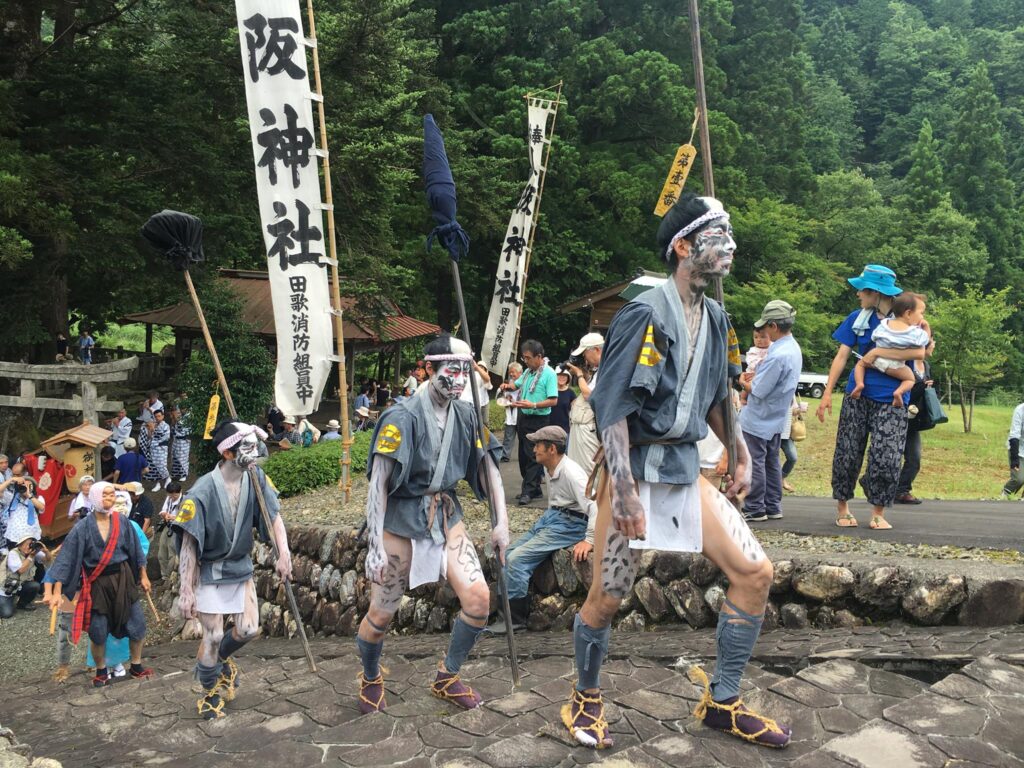Festivals in Miyama
Several festivals are held by locals throughout the year in Miyama. Visiting Miyama in time for one of those festivals is also highly recommended. Here are only a few examples.
Snow Lantern Festival

The Snow Lantern Festival is one of the highlights of the year in Miyama, which often receives heavy snowfall in winter. The weeklong annual festival takes place in the Kayabuki no Sato village of thatched-roof houses, beginning on the last Saturday in January. Anyone is welcome to take part in building the snow lanterns among the village’s houses. They are lit with candles or LEDs in the evening. Simple lanterns can be made by overturning buckets of snow and hollowing out the middle. In contrast, some participants go the extra mile, designing abstract-looking tealight holders that seem to come to life when lit up or lanterns that double as sculptures depicting popular animated characters. There are food and drink stalls in the village during the festival. Some of the houses continue to light their lanterns through late February.
In February, the town of Miyama organizes a separate snow festival at a sports field across the Yura River from Kayabuki no Sato. The program includes family-friendly events such as snow sculpture contests, sledding, and playful snow sports tournaments. Participation is free, and there are direct shuttle buses to the venue from central Kyoto and back.
Gion Kagura
Gion Kagura is an eclectic festival held annually at the Yasaka Shrine in the small village of Tauta on July 14. The celebration revolves around an hour-long parade through the village to the shrine, in which residents dress as folk-tale characters such as long-nosed tengu and ogre-like oni and dance, play the drums and flute, and chant on their way to perform a program of sacred dances for the deities. The nearly 400-year-old festival is the most important event of the year for the community and often draws hundreds of spectators.

The origins and history of Gion Kagura are uncertain, but it is thought to have been held in Tauta since 1640 and may have originated in Kyoto, the site of the original Gion (Yasaka) Shrine. Famines ravaged the Miyama area in the mid-1600s, and the festival may have started as a prayer for deliverance to the deities of Kyoto’s Gion Shrine, which was founded to ward off disease.
In its present form, Gion Kagura is part prayer for a bountiful harvest, part ritual conducted to ensure the well-being of the village, and part mechanism to reinforce community ties. The music played during the festival has been passed down by example for generations, and memorizing the melodies is considered the mark of a fully-fledged Tauta resident. As most participants know the program by heart, they rehearse only during the week prior to the festival.

